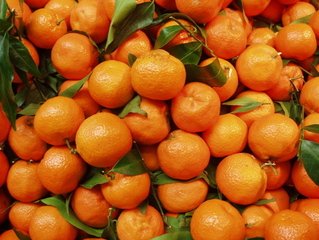Large harvested volumes and small fruit calibre keep Italian oranges prices low with only medium-large calibre getting higher quotes. The juice industry is playing a key role in keeping fresh prices afloat, according to a report released by the Italian Institute of Services for the Agricultural Food Market (Ismea).
Yields were high enough to offset the contraction of the cultivated area linked to the Tristeza virus in Sicilian orange groves. The only valid solution for the affected citrus groves from this disease is explanting and subsequent replanting with resistant rootstocks. The process is under way in Sicily and not all plants went back in production this season. Overall 80,000 hectares of orchards were harvested across Italy, 2.5% less than in 2019.
Orange production across Europe is projected to rise 6% compared with 2019/20, with Italy contributing to the growth with a 25-30% increase. Favourable climatic conditions during flowering and fruit set resulted in overloaded trees, but the thinning was not carried out as it should have been. The dry summer did not favour the growth of fruits, even the rain in October was not enough to help fruit to achieve a sound size. The product has excellent skin colour, good pulp pigmentation and a balanced relationship between acids and sugars; all features that fully satisfy consumer expectations.
According to Ismea, the role played by the juice industry is very important because, having stocks close to zero due to two consecutive small crops, is withdrawing large volumes of medium/small oranges relieving the pressure on the supply and preventing prices from collapsing.
Concerning demand, there are encouraging data for household consumptions with domestic retail sales in October 2020-January 2021 rising 11% on an annual basis. “Ultimately, the retail market for oranges appears to have entered a new phase characterised by renewed consumer interest in this product,” Ismea wrote. “Buyers show greater awareness of qualitative and nutritional characteristics and also show a greater propensity to pay for the higher quality product.”
This was particularly true during the first lockdown (March-May) which contributed to a 17% annual increase in imports in the period October 2019-September 2020 and 13% against the past three seasons average.


